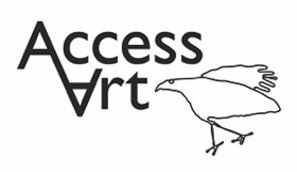“Art is not what you see,
but what you make others see”
- Edgar Degas
Art and Design
Vision
Our vision for Art and Design is to foster and support creativity in all our children such that they acquire the skills and confidence to express themselves through visual media. We aim to give children an art curriculum that allows them to gain access to the creative world around them, find answers to their questions, and gain a sense of what is possible. This will involve exciting, practical hands-on lessons that will inspire children of all abilities, releasing their artistic potential.
Art and Design Curriculum
-
At Hampreston we teach through a structure and sequence of lessons to help teachers ensure they have covered the skills required to meet the aims of the national curriculum. The intent is to ensure all pupils produce creative, imaginative work. Children have the opportunity to explore their ideas and record their experiences, as well as exploring the work of others and evaluate different creative ideas. Children will become confident and proficient in a variety of techniques including drawing, painting, and sculpting, as well as other selected craft skills, e.g. collage, printing, weaving and patterns. Children will also develop their knowledge of famous artists, designers and craft makers. Children will also develop their interest and curiosity about art and design through a series of lessons offering skills progression, knowledge progression and offering children the opportunity to ask questions and demonstrate their skills in a variety of ways. The lessons will offer the chance for children to develop their emotional expression through art to further enhance their personal, social and emotional development
To further our work in Art, we are supported by the AccessArt curriculum to ensure all staff and pupils have the best, most current approaches to Primary Art available.
-
Each key stage focuses on different themes to ensure continued interest in the subject as well as acquiring new knowledge. The lessons develop their techniques, including their control and their use of materials, with creativity, experimentation and an increasing awareness of different kinds of art, craft and design. Children should also know how art and design both reflect and shape our history, and contribute to the culture, creativity and wealth of our nation.
The specific series of lessons for each year group will offer structure and narrative.
-
Impact
Art and design learning is loved by teachers and pupils across school. Teachers have high expectations and work can be presented in a variety of ways. All children use technical vocabulary accurately and pupils are expected to know, apply and understand the matters, skills and processes specified. Children improve their enquiry skills and inquisitiveness about the world around them, and their impact through art and design on the world. Children will become more confident in analysing their work and giving their opinion on their own and other works of art.
Children show competences in improving their resilience and perseverance by continually evaluating and improving their work. All children in school can speak confidently about their art and design work and their skills.
-
Autumn
EYFS
• Mixing colours • Drawing a person • Flange join • Treasury tag • Moulding clay • Giuseppe Arcimboldo • Using glue to secure • Using tape to secure •
Year 1
Spirals:
Using drawing, collage and mark-making to explore spirals. Introducing sketchbooks.Year 2
Explore & Draw
Introducing the idea that artists can be collectors & explorers as they develop drawing and composition skills.Year 3
Gestural Drawing with Charcoal
Making loose, gestural drawings with charcoal, and exploring drama and performance.Year 4
Storytelling Through Drawing
Explore how artists create sequenced drawings to share and tell stories. Create accordion books or comic strips to retell poetry or prose through drawing. -
Spring
EYFS
• Making collages • Henri Matisse • Playing instruments • Mixing watercolour paints • 3D collages •
Year 1
Simple Printmaking
Explore simple ways to make a print. Use line, shape, colour and texture to explore pattern, sequencing and symmetry.Year 2
Expressive Painting
Explore how painters sometimes use paint in an expressive and gestural way. Explore colour mixing and experimental mark-making to create abstract still lifesYear 3
Cloth, Thread, Paint
Explore how artists combine media to create work in response to landscape. Use acrylic and thread to make a painted and stitched pieceYear 4
Exploring Pattern
Exploring how we can use colour, line and shape to create patterns, including repeating patterns. -
Summer
EYFS
• Mono printing • Georgia O’Keeffe • Mixing shades • Split pin join • Sewing to join •
Year 1
Playful Making
Exploring materials and intention through a playful approachYear 2
Stick Transformation
Project Explore how you can transform a familiar object into new and fun formsYear 3
Telling Stories Through Drawing & Making
Explore how artists are inspired by other art forms – in this case how we make sculpture inspired by literature and film.Year 4
Sculpture, Structure, Inventiveness & Determination
What can artists learn from nature?


